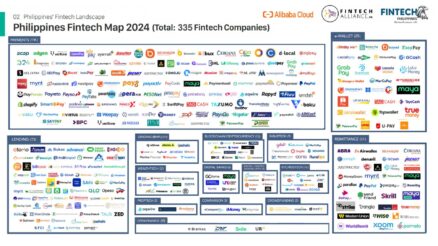Affiliate marketing isn’t just another digital buzzword-it’s your secret weapon to skyrocket your Philippine e-commerce business with minimal upfront cost! When you partner with affiliates-people who promote your products for a commission-you only pay when a sale is made. It’s like having a dynamic, performance-based salesforce working for you around the clock. Let’s break down how this modern strategy supercharges growth in a booming market.
Why Affiliate Marketing Matters in the Philippines
E-commerce in the Philippines is experiencing explosive growth. In 2025, the market size is projected to reach over USD 17 billion, with forecasts suggesting it could more than double within the next five years. This surge is driven by increased smartphone usage, improved digital infrastructure, and government initiatives supporting the digital economy.
Most Filipino shoppers are mobile-first, with more than half of online purchases happening through smartphones. Digital wallets such as GCash and Maya dominate the online payment scene, giving consumers confidence to shop online more frequently.
With platforms like Shopee and Lazada competing fiercely for attention, affiliate marketing becomes a cost-effective way to stand out, amplify reach, and build trust through voices that Filipino consumers already follow.
What Makes Affiliate Marketing a Smart Move?
Globally, affiliate marketing is one of the fastest-growing digital channels. In 2025, the industry is valued at more than USD 37 billion, contributing significantly to e-commerce sales worldwide. Businesses are seeing remarkable returns-earning as much as 12 dollars in revenue for every 1 dollar spent.
Mobile is also a huge driver: over half of affiliate traffic and the majority of conversions now happen on smartphones. Emerging formats like video content, live shopping, and social commerce are leading the way, especially in categories like beauty, fashion, and lifestyle-areas that Filipinos are highly engaged in.
How to Launch a Winning Affiliate Program
1. Set Clear Goals
Decide whether you want to increase sales, grow brand awareness, or capture new customers. This gives your affiliate strategy direction and purpose.
2. Offer Competitive Commission Rates
Typical commissions range from 2% to 10%. Tiered commissions are popular-for example:
- 1-10 sales: 5%
- 11-50 sales: 7%
- 51+ sales: 10%
This rewards high-performing affiliates while keeping your costs manageable.
3. Write Transparent Guidelines
Set rules on how affiliates can promote your products, what marketing methods are allowed, and payment schedules. This protects your brand while ensuring clarity.
4. Choose the Right Platform
- Self-managed programs using affiliate tracking software give you more control.
- Affiliate networks provide ready-made systems, tracking, and access to a large pool of affiliates.
5. Recruit Quality Affiliates
Seek out bloggers, social media creators, and niche experts with audiences that match your target market. Focus on engagement quality rather than just follower numbers.
6. Provide High-Quality Resources
Give affiliates access to banners, product images, copywriting samples, and exclusive discount codes. The easier you make it, the better the results.
7. Track, Analyze, Improve
Measure click-through rates, conversion rates, sales per affiliate, and ROI. Optimize by testing commission rates, content formats, or promotional methods.
The Value of Quality Over Quantity
It’s tempting to sign up as many affiliates as possible, but the most successful programs prioritize quality partners. Affiliates who understand your niche and have loyal, engaged followers often deliver better long-term results than a large number of low-quality promoters.
Think of it as building a team of brand ambassadors-you want partners who genuinely believe in your product and communicate authentically with their audience.
Commission Strategies That Work
The right payout strategy keeps affiliates motivated while protecting your profits. Some proven approaches include:
- Flat commissions (e.g., PHP 100 per sale) for simplicity
- Percentage-based commissions (e.g., 5% of sales) for scalability
- Tiered commissions to reward growth
- Performance bonuses for affiliates who exceed targets
Balance is key-too low and you won’t attract quality partners; too high and your margins will shrink.
Real Success Stories in the Philippines
- Lazada and Shopee run large affiliate programs, empowering bloggers and influencers to earn commissions while boosting platform sales.
- Travel brands like Agoda work with Filipino travel bloggers to promote hotel bookings.
- Local beauty and fashion brands collaborate with social media creators, giving them unique links or discount codes to track conversions.
These examples prove that affiliate marketing works across different industries in the Philippines.
Mistakes to Avoid
- Launching without clear goals
- Offering unattractive or unsustainable commissions
- Neglecting to provide affiliate support
- Ignoring analytics and optimization
- Partnering with affiliates who use spammy or unethical tactics
Staying proactive prevents wasted time and money.
The Power of Social Media and Mobile
Filipinos are among the most active social media users in the world, spending hours daily on platforms like TikTok, Facebook, and Instagram. These channels are goldmines for affiliate marketing. Short videos, livestream selling, and influencer collaborations create instant engagement and trust.
Since the Philippines is a mobile-first country, every part of your program must be optimized for smartphones-fast-loading websites, mobile-friendly links, and seamless payment systems are non-negotiable.
The Future of Affiliate Marketing in the Philippines
Looking ahead, affiliate marketing in the Philippines will continue evolving with trends such as:
- Video-first campaigns: TikTok and YouTube content will dominate affiliate-driven sales.
- Live shopping events: Combining entertainment with e-commerce in real time.
- Social commerce integration: Direct shopping through platforms without leaving the app.
- Personalization and data-driven targeting: Affiliates tailoring content to consumer preferences.
Businesses that adapt quickly to these trends will capture the lion’s share of growth.
FAQs
What are the benefits of affiliate marketing?
It’s cost-effective, performance-based, and builds brand trust through influencers and niche creators.
How do I find good affiliates?
Look for partners with relevant audiences, high engagement, and quality content. Avoid affiliates who use spammy or misleading tactics.
How much commission should I offer?
Rates vary, but 2-10% is common. Tiered systems or bonuses can motivate top performers.
Is affiliate marketing worth it?
Yes-when managed properly, it delivers strong ROI, drives brand growth, and scales with your business.
Affiliate marketing is no longer optional-it’s an essential growth engine for e-commerce in the Philippines. By building the right partnerships, offering fair commissions, and adapting to mobile and social-first trends, your brand can thrive in this rapidly expanding market. The earlier you start, the faster you can grow 🚀.




